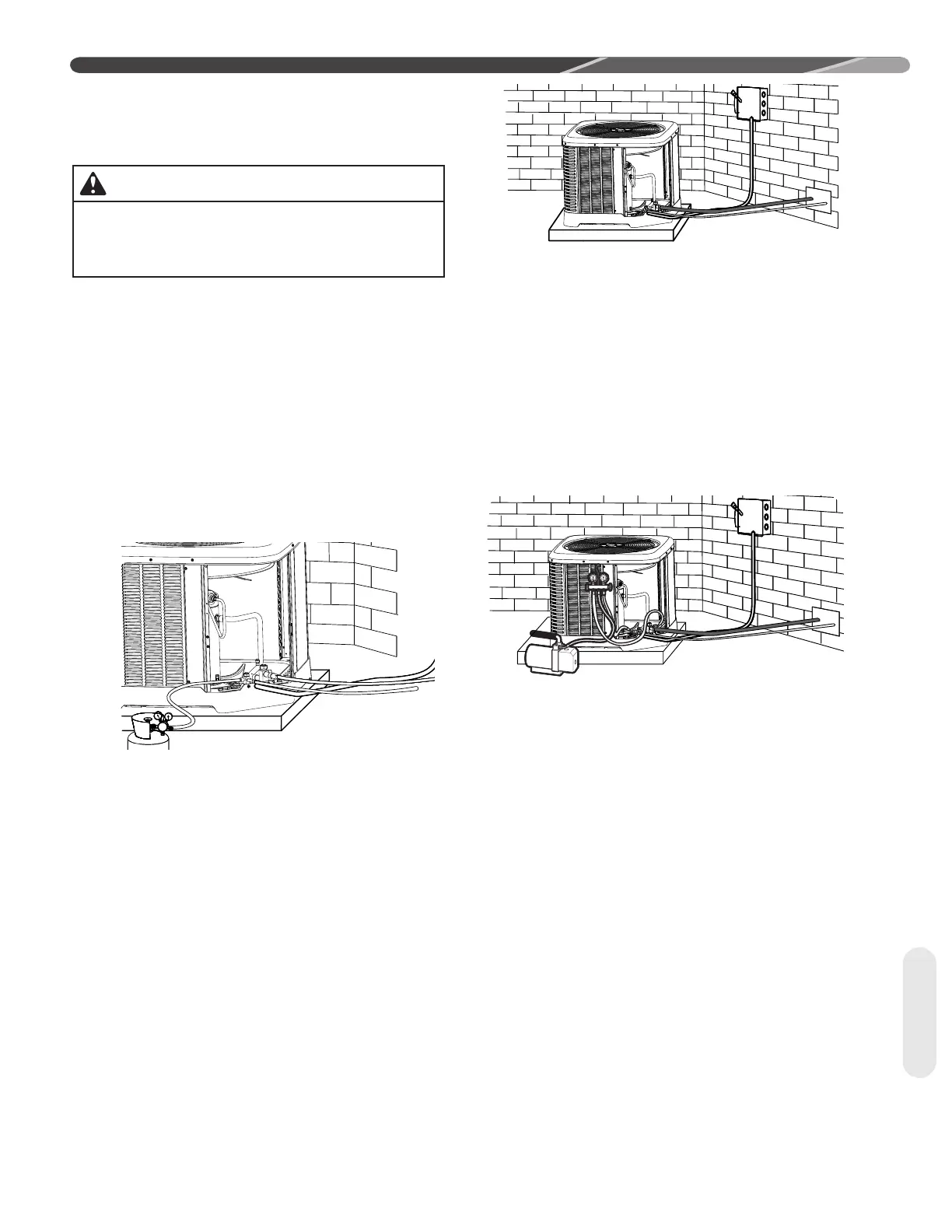19
Tubing
4.6 Initial Leak Testing
Indoor coils have only a holding charge of dry
nitrogen. Keep all tube ends sealed until connections
are to be made.
The variable speed inverter driven heat pumps are
equipped with an EXV and must be matched to
indoor coils or air-handlers that are also equipped
with EXVs. During shipment, vibration has been
found to move the EXV stem valve to a near closed
position despite being set to a fully open position in
the factory. Prior to leak testing it is recommended to
apply power to the indoor and outdoor units, making
sure there is no call for operation by disconnecting
the EcoNet™ control center or thermostat. By doing
this, the controls will immediately close the EXV's
followed immediately by opening them to the wide
open position, permitting free flow of nitrogen through
the system during the brazing process.
Figure 18: Pressurize Line Set
1. Pressurize line set and coil through service fit-
tings with dry nitrogen to 150 PSIG [1,034 kPa]
(maximum). Close nitrogen tank valve, let sys-
tem sit for at least 15 minutes, and check to see
if the pressure has dropped. If the pressure has
dropped, check for leaks at the line set braze
joints with soap bubbles and repair leak as nec-
essary. Repeat pressure test. If line set and coil
hold pressure, proceed with line set and coil
evacuation (see Sections 4.7 and 4.8 for evacu-
ation and final leak testing).
Figure 19: Insulate Vapor Line
2. The vapor line must be insulated for its entire
length to prevent dripping (sweating) and prevent
performance losses. Closed-cell foam insulation
such as Armaflex and Rubatex
®
are satisfactory
insulations for this purpose. Use 1/2" [12.7 mm]
minimum insulation thickness. Additional insula-
tion may be required for long runs. The liquid
line must be insulated in any unconditioned
space when long line sets are used and anytime
the liquid line is run through an attic due to hot
temperatures that occur there.
4.7 Evacuation
Figure 20: Evacuate Air and Moisture from System
Evacuation is one of the most important parts of the
entire installation and service procedure. The life
and efficiency of the equipment is dependent upon
the thoroughness exercised by the serviceman when
evacuating air and moisture from the system.
Air or nitrogen in the system increases condensing
temperature and pressure, resulting in increased
power consumption, erratic operation, and reduced
capacity.
Moisture chemically reacts with the refrigerant and oil
to form corrosive acid which attacks the compressor
motor windings and internal parts and which can
result in compressor failure.
3. After the system has been leak-checked and
proven sealed, connect the vacuum pump and
evacuate system to 500 microns and hold 500
microns or less for at least 15 minutes. The
vacuum pump must be connected to both the
high and low sides of the system by connecting
to the two pressure ports. Use the largest size
connections available since restrictive service
connections may lead to false readings because
of pressure drop through the fittings.
WARNING:
Do not use oxygen to purge lines or pressurize
system for leak test. Oxygen reacts violently with
oil, which can cause an explosion resulting in
severe personal injury or death.

